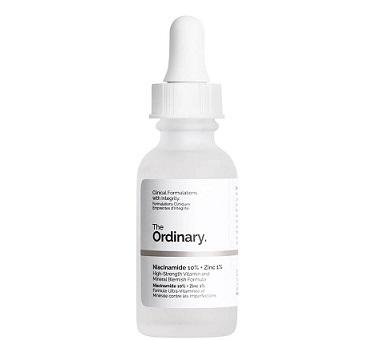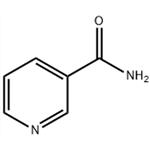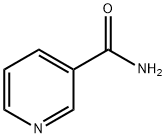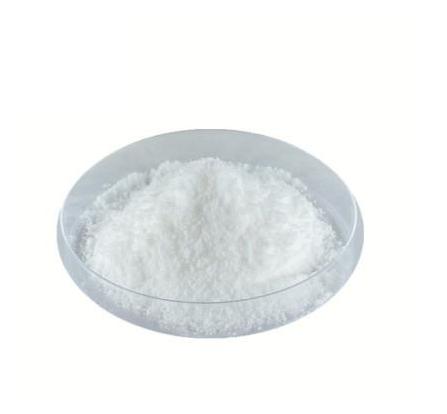Topical Pharmacology and Uses in Skin of Nicotinamide
Aging is caused by many different factors such as the loss of deep bone structure and subcutaneous fat, in addition to oxidative skin damage caused by cumulative sun exposure. Oxidative processes such as glycation (also known as the Maillard reaction) are spontaneous oxidative processes that cross-link sugars and proteins. The resultant dermal glycosaminoglycans (GAGs) are yellow-brown in color and characteristic of photoaged skin. These cross-linked proteins can aggregate in between the longlasting collagen fibers in the aging dermis, which can contribute to the yellowing, sallow appearance of aging skin. There are studies indicating a fivefold increase in collagen glycation products in human skin from age 20 to 80. In patients with diabetes, increased blood glucose levels can also increase glycation and can lead to noticeably yellower skin, or “yellow skin syndrome.”
Treatment of Photoaging
As mentioned earlier, niacinamide is a precursor to the co-factors NAD and NADP and their reduced
form, NADH and NADPH. The reduced forms serve as potent antioxidants.18 In fact, NADH has greater
reducing ability when compared with other vitamins such as C and E.18 In aging skin, there are reduced
levels of NADH and NADPH, which are vital to cell metabolism and epidermal turnover. Topical application
of niacinamide can increase levels of NADH and NADPH, which therefore inhibit the formation
of glycation end-products and the sallowness associated with aging skin.
In a clinical study by Bisset et al., topical 5% niacinamide in an oil-in-water moisturizer commercial
product (not identified) was applied to the face twice daily for 12 weeks (n = 50, healthy Caucasian females age 40–60). This study was double-blind, placebo-controlled, split-face, and side-randomized
and results were captured and assessed digitally and subjectively. Topical 5% niacinamide prevented
facial skin red blotchiness and hyperpigmentation compared with the control. Additionally, treatment
with the same topical 5% niacinamide moisturizer also resulted in a small but significant reduction in
fine lines/wrinkles at the end of 12 weeks of treatment compared with control. Sallowness was also
assessed; at the 8- and 12-week mark, topical 5% niacinamide was significantly effective at preventing
skin yellowing. The anti-aging effects of this well tolerated topical 5% niacinamide formula was thought
secondary to a reduction in excess GAG production in the dermis.

Epidermal Barrier Function Repair
The primary role of the skin is to protect against injury, regulate temperature, and prevent water loss. Skin irritation and inflammation is often a function of an impaired skin barrier function. In dry environments, inflammatory conditions such as atopic dermatitis, psoriasis, and pruritus are often aggravated. When levels of humidity are less than 10%, the stratum corneum actively begins to lose moisture. Hot water, harsh soaps and detergents, and scrubbing can strip the skin of naturally occurring protective lipids, further compromising the skin barrier.
Water is integral to a properly functioning stratum corneum. Enzymes within the stratum corneum need water in order to degrade the corneodesmosomes, allowing for normal desquamation.
Keratinocytes then flatten and extrude lipids; these keratinocytes cornify and become corneocytes to provide a thick, protein-rich cornified envelope. This cornified envelope affords an insoluble barrier of highly cross-linked keratin bundles. The corneocytes are held together tightly by lipids, consisting mostly of ceramides, free fatty acids, and cholestero These stratum corneum lipids play a vital role in skin barrier homeostasis. For example, low levels of ceramides occur in atopic dermatitis and aging skin. Environmental changes such as cold weather and low humidity can also decrease levels of stratum corneum lipids and cause a decrease in ceramides.
Normally, the stratum corneum constantly renews itself and efficiently repairs itself with routine wear and tear. With aging, there is a reduction in the synthesis of skin barrier proteins such as keratin, filaggrin, and involucrin. Filaggrin is especially important. Breakdown of filaggrin into the stratum corneum forms natural moisturizing factor (NMF), which comprises 20%–30% of the stratum corneum’s total dry weight. NMF is a humectant, allowing for stratum corneum to bind water. NMF levels significantly decline with age, which corresponds to the drier skin observed in the elderly population.
With aging, the sum of reduced synthesis of stratum corneum proteins and reduction of NMF result in a compromised skin barrier function and trans-epidermal water loss (TEWL), respectively. There have been several studies showing that niacinamide can increase the biosynthesis of ceramides and other intercellular lipids in the stratum corneum, including free fatty acids and cholesterol. An in vitro study by Tanno et al.32 showed that when niacinamide was added to human keratinocyte cultures, ceramide synthesis was increased in a dose-dependent manner. Other intercellular lipids in the stratum corneum, such as free fatty acids, cholesterol, glycosylceramide, and sphingomyelin, were also increased. The specific mechanism was elucidated by measuring the effect of niacinamide on the activity of serine palmitoyltransferase (SPT) activity, the rate-limiting enzyme in the synthesis of sphingolipids; incubation of keratinocytes with niacinamide significantly increased the activity of SPT compared with control. In an in vivo study by Tanno et al., 2% niacinamide was topically applied twice daily for four weeks on volunteers with dry skin (n = 12). Levels of ceramides, free fatty acids, and cholesterol were quantified, which revealed significantly increased levels of ceramide and free fatty acids in the stratum corneum compared with vehicle. TEWL was also measured after four weeks of treatment, which showed that skin treated with topical 2% niacinamide showed significantly lower loss when compared with vehicle. The level of ceramides in the stratum corneum was directly correlated with TEWL, indicating that higher levels of ceramides prevented water loss from the stratum corneum and an improvement of the epidermal barrier.
Inflammatory Dermatoses
Epidermal barrier dysfunction can exacerbate inflammatory dermatoses such as atopic dermatitis, rosacea, and psoriasis.21 This is especially evident when variations in the humidity of the environment occur during the winter and in arid climates. As reviewed before, low humidity impairs normal epidermal barrier function and can worsen these inflammatory dermatoses. Pro-inflammatory cytokine IL-1α, which is pre-formed within human keratinocytes, is released immediately when the skin barrier is disrupted. IL-1α in turn upregulates the release of other pro-inflammatory cytokines such as intercellular adhesion molecule-1 (ICAM-1), IL-6, IL-8, and granulocyte colony-stimulating factor, causing further inflammation of the skin. It has also been shown that free radicals play a role in inflammatory dermatoses.36 As previously mentioned, NADH, the reduced form of niacinamide, acts as an antioxidant and can protect cells and membranes from damage by free radicals. Acne Acne vulgaris is one of the most common dermatological complaints and can be seen in all ages ranging from the first year of life into adulthood. It is a multifactorial disease in which genetics, hormonal changes, and bacteria can play a pathogenic role. Propionibacterium acnes induces inflammation by increasing neutrophils and pro-inflammatory cytokines. The first-line treatments include oral and topical antibiotics, which are often combined with comedolytic agents such as topical salicylic acid or retinoids. However, there has been growing concern for the increasing resistance of P. acnes to multiple antibiotics. 39–41 This has encouraged the development of alternative therapies, such as benzoyl peroxide (BP), which are efficacious and yet do not present the problem of bacterial resistance. However, BP often causes dryness and irritation of the skin. Niacinamide has shown effectiveness as an anti-inflammatory as well as assisting in epidermal barrier repair, as discussed earlier. These properties, as well as avoidance of bacterial resistance, would make niacinamide an excellent topical acne treatment.
REFERENCES
1. Dyer DG, Dunn JA, Thorpe SR et al. Accumulation of Maillard reaction products in skin collagen in
diabetes and aging. J Clin Invest 1993;91(6):2463–9.
2. Wu JT. Advanced glycosylation end products: A new disease marker for diabetes and aging. J Clin Lab
Anal 1993;7(5):252–5.
3. Crisan M, Taulescu M, Crisan D et al. Expression of advanced glycation end-products on sun-exposed
and non-exposed cutaneous sites during the ageing process in humans. PLoS One 2013;8(10):0075003.
4. Wilson SL, Guilbert M, Sule-Suso J et al. A microscopic and macroscopic study of aging collagen on its
molecular structure, mechanical properties, and cellular response. Faseb J 2014;28(1):14–25.
5. Pageon H, Zucchi H, Rousset F, Monnier VM, Asselineau D. Skin aging by glycation: Lessons from the
reconstructed skin model. Clin Chem Lab Med 2014;52(1):169–74.
6. Bissett DL, Oblong JE, Berge CA. Niacinamide: A B vitamin that improves aging facial skin appearance.
Dermatol Surg 2005;31:860–6.
7. Bos DC, de Ranitz-Greven WL, de Valk HW. Advanced glycation end products, measured as skin autofluorescence
and diabetes complications: A systematic review. Diabetes Technol Ther 2011;13(7):773–9.
8. Al L. Vitamins and Coenzymes. New York, NY: Worth Publishers; 1975.
9. Bissett DL, Miyamoto K, Sun P, Li J, Berge CA. Topical niacinamide reduces yellowing, wrinkling, red
blotchiness, and hyperpigmented spots in aging facial skin. Int J Cosmet Sci 2004;26(5):231–8.
10. Denda M, Sato J, Tsuchiya T, Elias PM, Feingold KR. Low humidity stimulates epidermal DNA synthesis
and amplifies the hyperproliferative response to barrier disruption. Implication Season Exacerb
Inflam Dermatoses 1998;111(5):873–8.
You may like
Related articles And Qustion
See also
Lastest Price from Nicotinamide manufacturers

US $0.00/Kg2025-10-13
- CAS:
- 98-92-0
- Min. Order:
- 1Kg
- Purity:
- 98%
- Supply Ability:
- 20Ton

US $0.00/KG2025-08-26
- CAS:
- 98-92-0
- Min. Order:
- 1KG
- Purity:
- 99%MIN
- Supply Ability:
- 20tons



